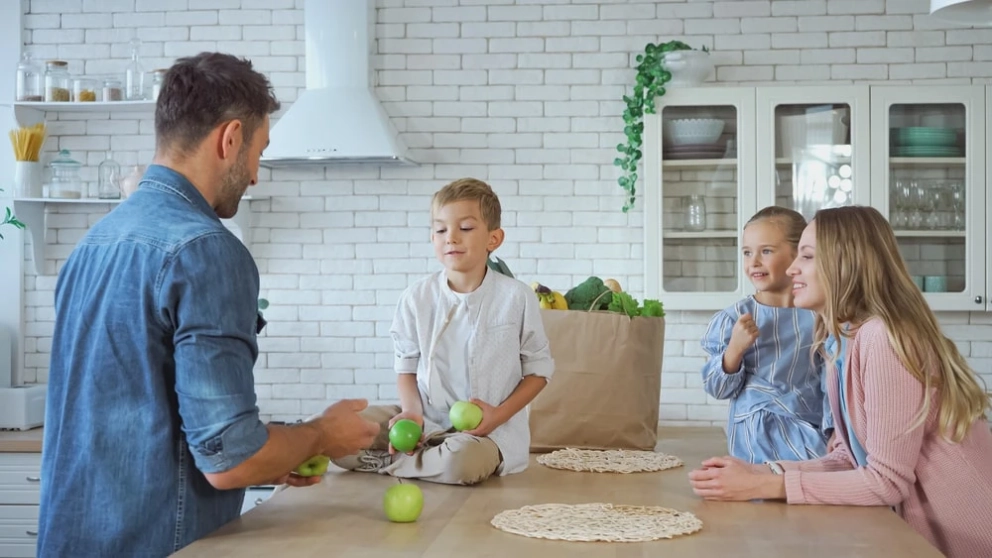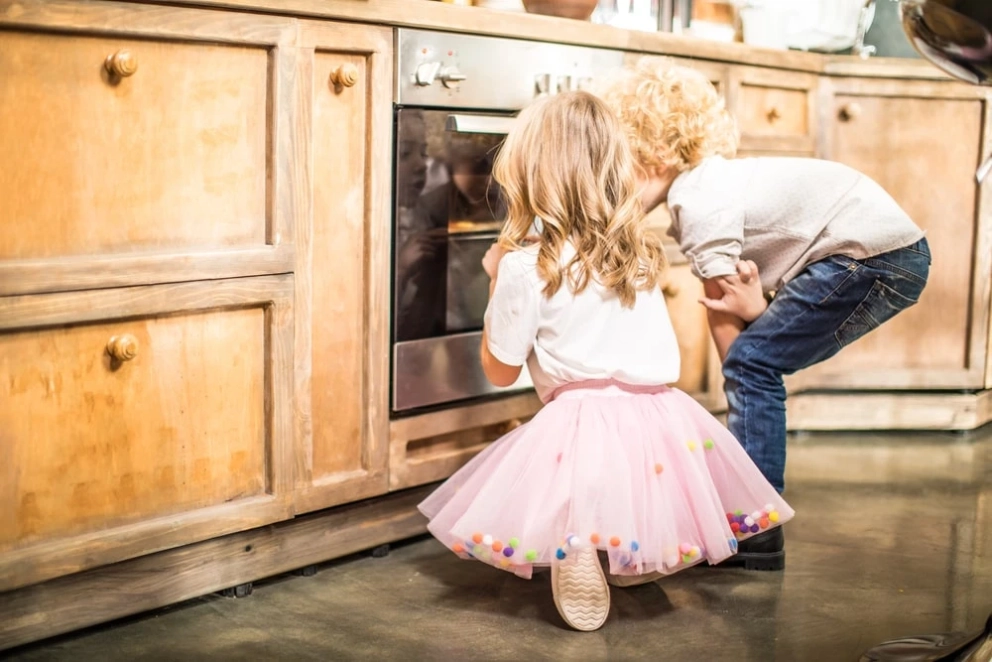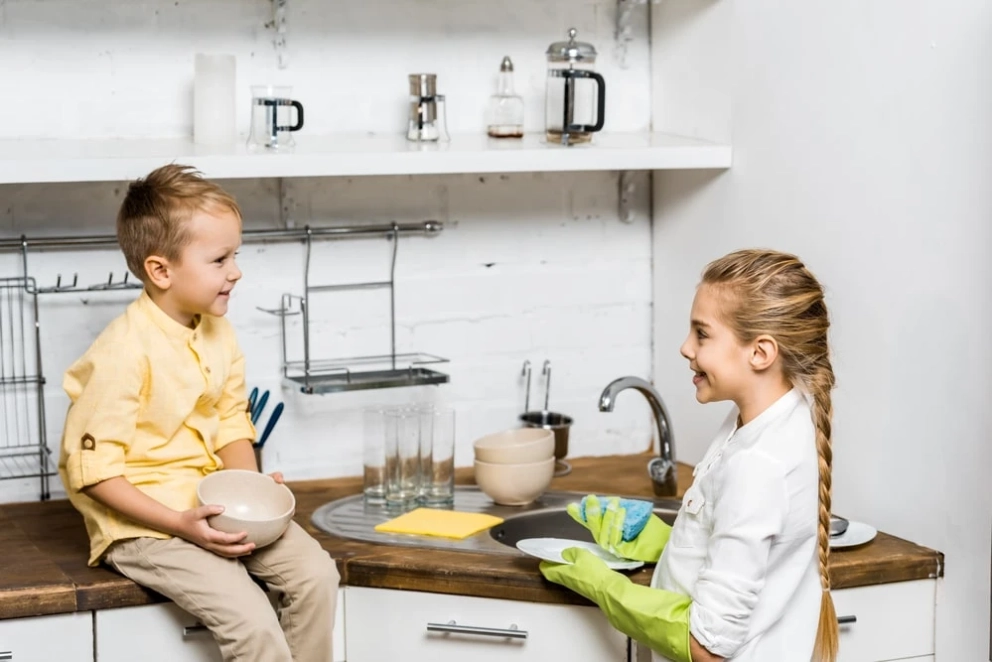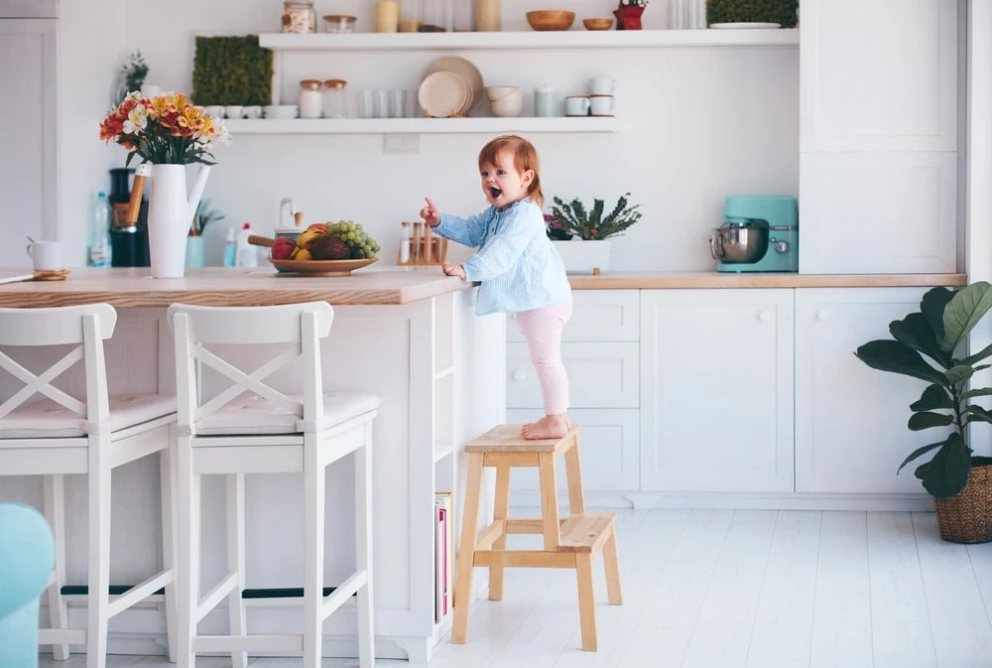Childproof the kitchen - how to provide kitchen child safety?

When it comes to ensuring child safety in the kitchen, parents often find themselves grappling with numerous concerns. One of the most pressing issues is how to child-proof kitchen cabinets. These storage spaces can contain a myriad of potential hazards, from sharp objects to toxic cleaning supplies, making them a prime area for accidents. Thankfully, there are several simple and effective strategies for child-proofing kitchen cabinets that can help alleviate these worries. Installing child-proof locks or latches on cabinet doors is a popular choice, as it prevents curious little hands from accessing potentially harmful items. Additionally, storing hazardous materials out of reach or in child-proof kitchen drawers can further minimize the risk of accidents, providing parents with peace of mind knowing that their kitchen is a safe environment for their children.
In this blog, we're going to talk about all these concerns and more. We'll give you easy ideas for keeping your kitchen kid-friendly. From simple ways to child-proof kitchen cupboards to smart tricks for making sure no harm comes from sharp corners or risky materials, we'll cover everything. This Cut2Size blog will be your go-to guide for making your kitchen a safe and happy place for your family. Stay tuned for helpful tips and tricks that will give you peace of mind as you cook and spend time with your kids in the kitchen.
Assess the kitchen's potential hazards
In this section, we'll delve into the importance of safety rules in the kitchen for children, highlight common hazards, and provide practical tips on child kitchen safety to help parents and caregivers create a secure environment for their little ones.
Before delving into specific safety measures, it's essential to first identify potential hazards in the kitchen. From sharp objects to hot surfaces, numerous dangers can pose a risk to children. Here are some key areas to pay attention to:
- Sharp objects - Knives, scissors, and other sharp utensils should be stored securely out of reach of children.
- Hot surfaces - Stovetops, ovens, and other appliances can cause burns if touched. It's crucial to establish a baby-proof kitchen by using stove guards and ensuring that handles are turned away from the edge of the stove.
- Chemicals and cleaning products - Cleaning supplies, detergents, and other chemicals should be stored in locked cabinets to prevent accidental ingestion.
- Electrical appliances - Toasters, blenders, and other electrical appliances can pose a risk of electric shock or burns. Keep cords out of reach and consider using outlet covers to prevent access to electrical outlets.
- Slippery floors and corners - Spills on tile surfaces can lead to slips and falls. This increases the risk of hitting a small kid' head on a cabinet or table corner. Promptly clean up any spills and consider using non-slip rugs and soft baby-proofing corner guards in high-traffic areas.
Kitchen safety rules for child

Now that we've identified potential hazards, let's explore some baby-proofing strategies to mitigate these risks and create a safer environment for children in the kitchen:
- Baby-proof kitchen drawers and cabinets. Install safety latches or locks on drawers and cabinets to prevent children from accessing sharp objects, cleaning supplies, or other dangerous items. There are various types of locks available, including magnetic locks, adhesive locks, and sliding locks, so choose the option that best suits your needs. Explore the use of smart locks and sensors to secure cabinets and drawers in your kitchen. These devices can be controlled remotely via your smartphone, allowing you to lock or unlock cabinets as needed, even when you're not at home. Additionally, sensors can alert you if a cabinet or drawer is opened, providing an extra layer of security and peace of mind.
- Kitchen island baby-proofing. If you have a kitchen island, it's essential to ensure that it's safely secured to the floor to prevent tipping. Additionally, consider installing corner guards to protect against bumps and collisions. Incorporate child-friendly design elements into your kitchen, such as rounded corners on countertops and dining tables as well as smooth cabinet hardware. These features not only enhance safety but also create a welcoming and comfortable space for your family to enjoy together.
- Childproofing appliances. Use appliance locks or guards to prevent children from tampering with ovens, dishwashers, and other appliances. Keep appliance cords out of reach, and never leave appliances unattended while in use. Invest in smart kitchen appliances that come equipped with built-in safety features designed with children in mind. For example, some stoves and ovens now have automatic shut-off capabilities if they detect unusual activity or prolonged use, helping to prevent accidental burns or fires.
- Secure furniture and fixtures. Anchor heavy furniture such as bookshelves, refrigerators, and freestanding cabinets to the wall to prevent tipping. This is especially important in open-plan kitchens where children have more room to roam.
- Safe storage solutions. Store heavy items on lower shelves and lighter items on higher shelves to prevent tipping or falling objects. Make sure that pots, pans, and other cookware are stored securely to avoid accidents.
Creating a safe environment
In addition to baby-proofing specific areas of the kitchen, there are several general safety measures that parents and caregivers should implement to promote child kitchen safety:
- Supervision - Always supervise young children in the kitchen, especially when cooking or using appliances. Keep children away from hot surfaces and sharp objects, and teach them about the dangers of the kitchen.
- Educate and empower - Teach children about kitchen safety from a young age, including the importance of washing hands before handling food, staying away from hot surfaces, and never touching electrical appliances and sockets with wet hands.
- Lead by example - Set a good example by practicing safe cooking habits yourself. Use oven mitts when handling hot dishes, turn pot handles away from the stove's edge, and always follow safety guidelines when using appliances.
- Regular maintenance - Regularly inspect the kitchen for potential hazards and address any issues promptly. Replace worn or damaged appliances, repair loose cabinet doors or drawers, and keep countertops clear of clutter.
- Emergency preparedness - Have a plan in place for dealing with kitchen accidents or emergencies. Keep a fully stocked first aid kit in the kitchen, know how to administer basic first aid, and have emergency contact numbers readily available.
Childproof kitchen techniques

As any parent knows, it is much easier to babyproof kitchen potential danger zones than to heal curious little ones as well as fix damage to kitchen units. From sharp utensils to hazardous chemicals, numerous hazards can pose a risk to children. However, with the right childproof measures in place, you can create a safe and secure environment for your little explorers.
- Childproofing your kitchen cabinets and drawers
Locking cabinets is a crucial step in ensuring your child's safety. Fortunately, there are many childproof locks available on the market that are specifically designed to prevent children from accessing potentially harmful items. These locks come in various styles, including adhesive child safety latches and magnetic child safety locks, offering a range of options to suit your needs. - Choose the right childproof locks
When selecting childproof locks for your kitchen cabinets and drawers, it's essential to choose ones that are sturdy and durable and correspond to the age of the child. Look for products that can withstand the curious fingers of toddlers and provide reliable protection against unwanted access. Additionally, consider baby-proofing kitchen drawers and baby-safety kitchen cupboards without drilling if you prefer a non-invasive installation method.
For kitchen cabinets that cannot be drilled into, there are child-proof locks available that utilize adhesive backing for easy application. These child safety locks provide a secure hold without damaging your cabinets, making them an ideal solution for renters or homeowners who prefer not to drill holes. Installing child-safety kitchen door locks can prevent young children from entering the kitchen unsupervised. - Childproof your kitchen fixtures
When it comes to childproofing kitchen fixtures, don't overlook the kitchen sink faucet. Investing in a child-proof kitchen faucet can prevent curious little hands from turning on hot water or playing with the tap, reducing the risk of burns or flooding accidents. - Child safety gates and toddler stools
In addition to childproof locks, it's essential to consider other child safety measures in the kitchen. Child safety gates and a toddler stool provide a physical barrier to keep them out of potentially dangerous areas.
A toddler stool for the kitchen allows young children to safely reach the approved countertop zone, reducing the temptation to climb on chairs or other unstable surfaces. Look for a sturdy toddler kitchen stool with non-slip feet to ensure stability during use.
Childproofing your kitchen is essential for keeping your little ones safe from harm. By installing child safety locks on kitchen cabinets and drawers, securing kitchen doors, and investing in childproof fixtures such as kitchen faucets and toddler stools, you can create a secure environment where your children can explore and learn safely.
Additional child safety tips for the kitchen
Suppose you are still concerned about your little ones. In that case, Implementing these additional safety measures in your kitchen can further minimize potential hazards and create a safer environment for your children to explore.
| Safety measure | Description |
| Secure loose electrical cords | Tuck away or secure loose electrical cords from appliances to prevent tripping hazards and reduce the risk of electrical accidents. |
| Store plastic bags safely | Keep plastic bags out of reach and properly stored to prevent suffocation or choking hazards for young children. |
| Look for loose handles or knobs | Regularly inspect kitchen appliances and cabinets for loose handles or knobs that could pose a choking hazard if pulled off by a curious child. |
| Store sharp objects safely | Store sharp knives and utensils in locked drawers or high cabinets to prevent accidental cuts or injuries to children reaching for them. |
| Lock away hazardous cleaning products | Again, keep cleaning products, including detergents, bleach, and disinfectants, stored securely in cabinets with childproof locks to prevent ingestion. |
| Install oven and stove knob covers | Use stove knob covers to prevent children from accidentally turning on burners or adjusting oven settings, reducing the risk of burns or fires. |
| Use oven door locks | Install oven door locks to prevent children from opening hot oven doors or reaching inside, minimizing the risk of burns or other injuries. |
| Check refrigerator magnets | Ensure refrigerator magnets are securely attached and large enough to avoid being swallowed by young children, reducing the risk of choking. |
Innovative approaches to childproofing your kitchen

Childproofing your kitchen is not just about traditional safety measures like cabinet locks and safety gates; it's also about leveraging modern technologies and smart home appliances to create a safer environment for your kids. Here are some unique approaches to consider:
Childproofing apps - There are now apps available that can help you track and manage your childproofing efforts in the kitchen. These apps allow you to create checklists, set reminders for maintenance tasks, and even provide personalized recommendations based on your specific needs and challenges.
Voice-activated controls - Consider integrating voice-activated controls into your smart kitchen environment to reduce the need for manual interactions that could potentially be hazardous for children. Voice commands can be used to control lighting, adjust temperatures, and even lock cabinets, providing a hands-free and child-safe experience.
By embracing these innovative approaches to childproofing your kitchen, you can create a safer and more secure environment for your children while also enjoying the benefits of modern technology and smart home integration.



